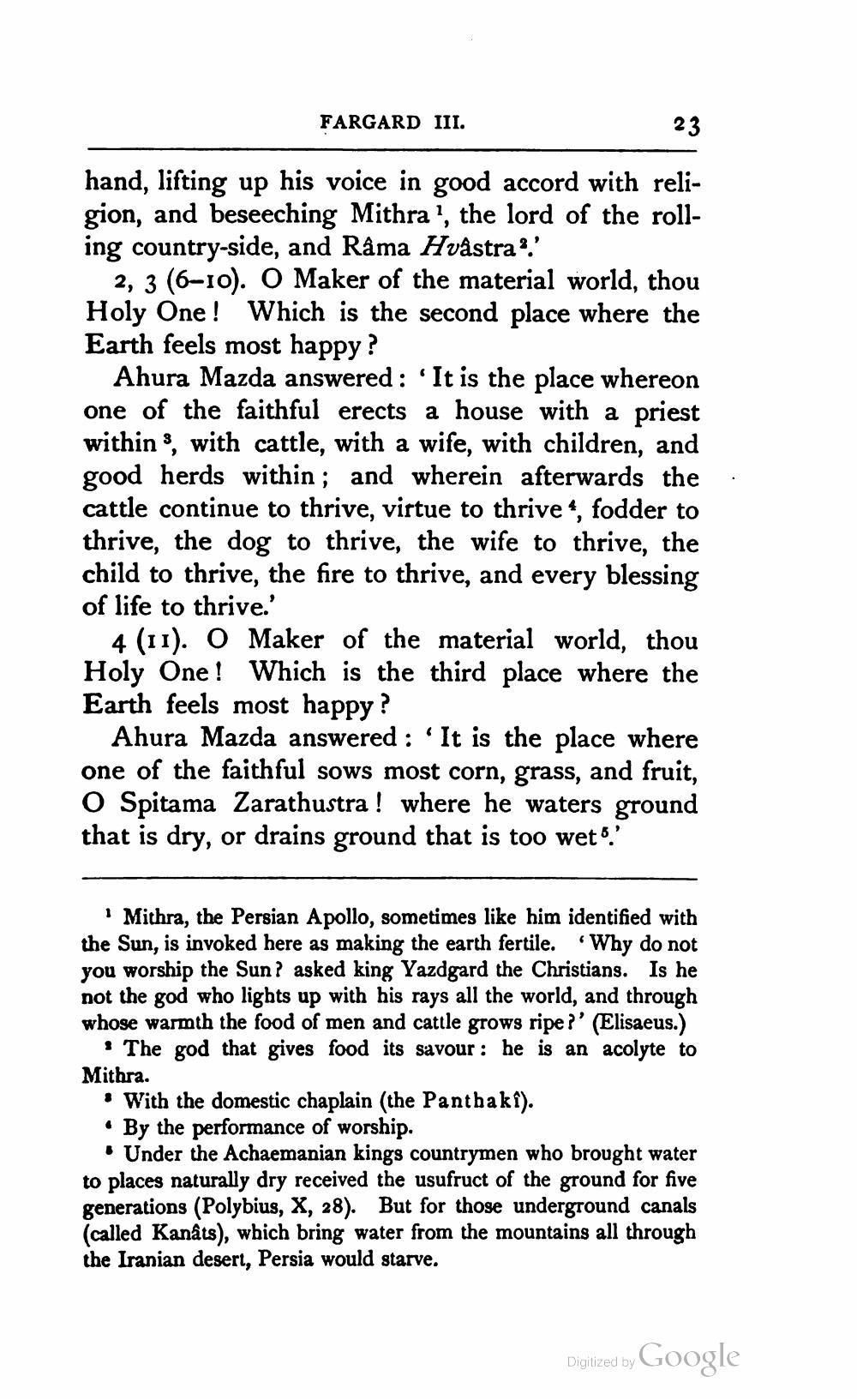________________
23
hand, lifting up his voice in good accord with religion, and beseeching Mithra1, the lord of the rolling country-side, and Râma Hvâstra'.'
FARGARD III.
2, 3 (6-10). O Maker of the material world, thou Holy One! Which is the second place where the Earth feels most happy?
Ahura Mazda answered: 'It is the place whereon one of the faithful erects a house with a priest within, with cattle, with a wife, with children, and good herds within; and wherein afterwards the cattle continue to thrive, virtue to thrive, fodder to thrive, the dog to thrive, the wife to thrive, the child to thrive, the fire to thrive, and every blessing of life to thrive.'
4 (11). O Maker of the material world, thou Holy One! Which is the third place where the Earth feels most happy?
Ahura Mazda answered: 'It is the place where one of the faithful sows most corn, grass, and fruit, O Spitama Zarathustra ! where he waters ground that is dry, or drains ground that is too wet.'
'Mithra, the Persian Apollo, sometimes like him identified with the Sun, is invoked here as making the earth fertile. 'Why do not you worship the Sun? asked king Yazdgard the Christians. Is he not the god who lights up with his rays all the world, and through whose warmth the food of men and cattle grows ripe?' (Elisaeus.)
The god that gives food its savour: he is an acolyte to
Mithra.
• With the domestic chaplain (the Panthaki).
By the performance of worship.
Under the Achaemanian kings countrymen who brought water to places naturally dry received the usufruct of the ground for five generations (Polybius, X, 28). But for those underground canals (called Kanâts), which bring water from the mountains all through the Iranian desert, Persia would starve.
Digitized by
Google




